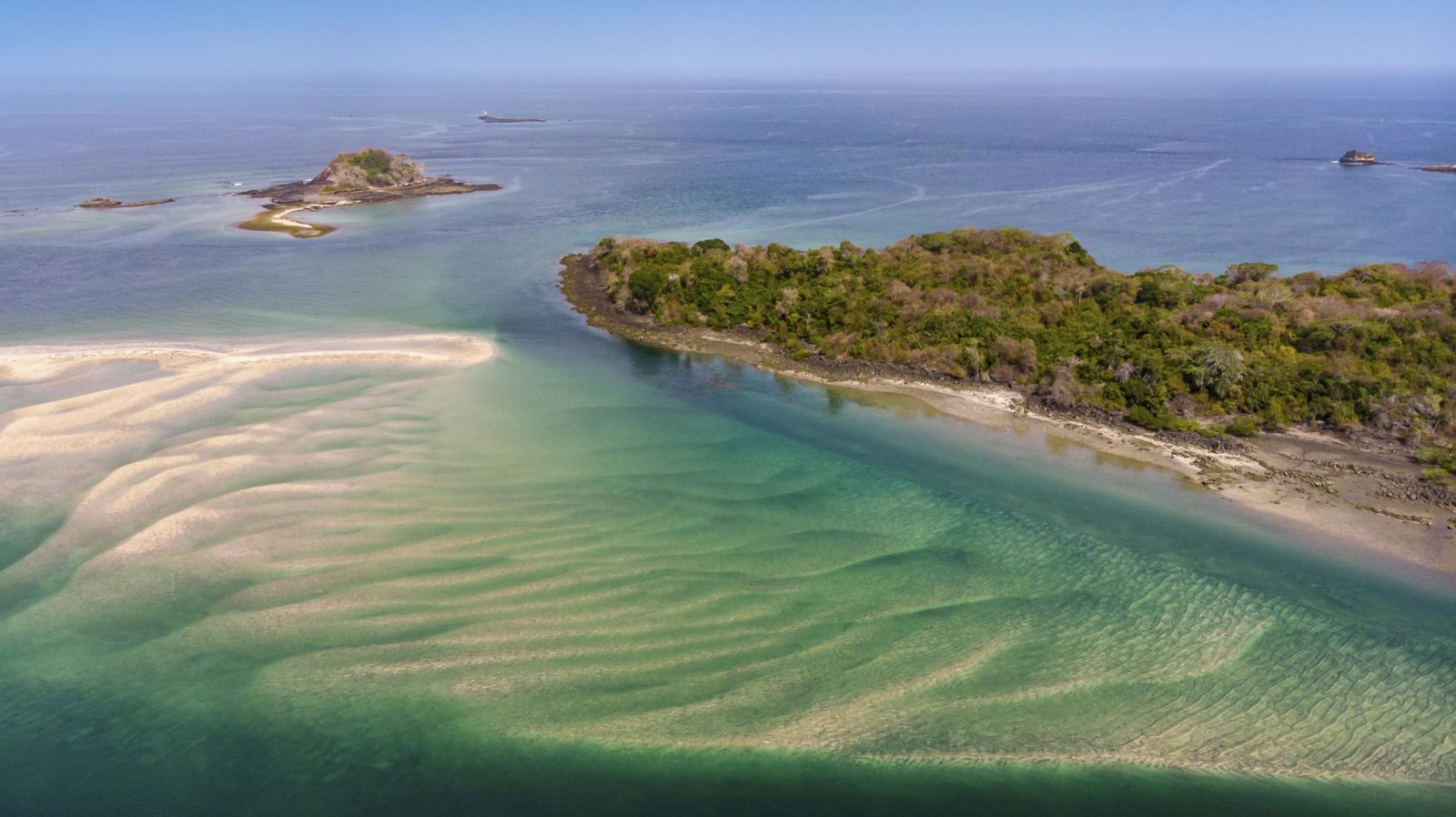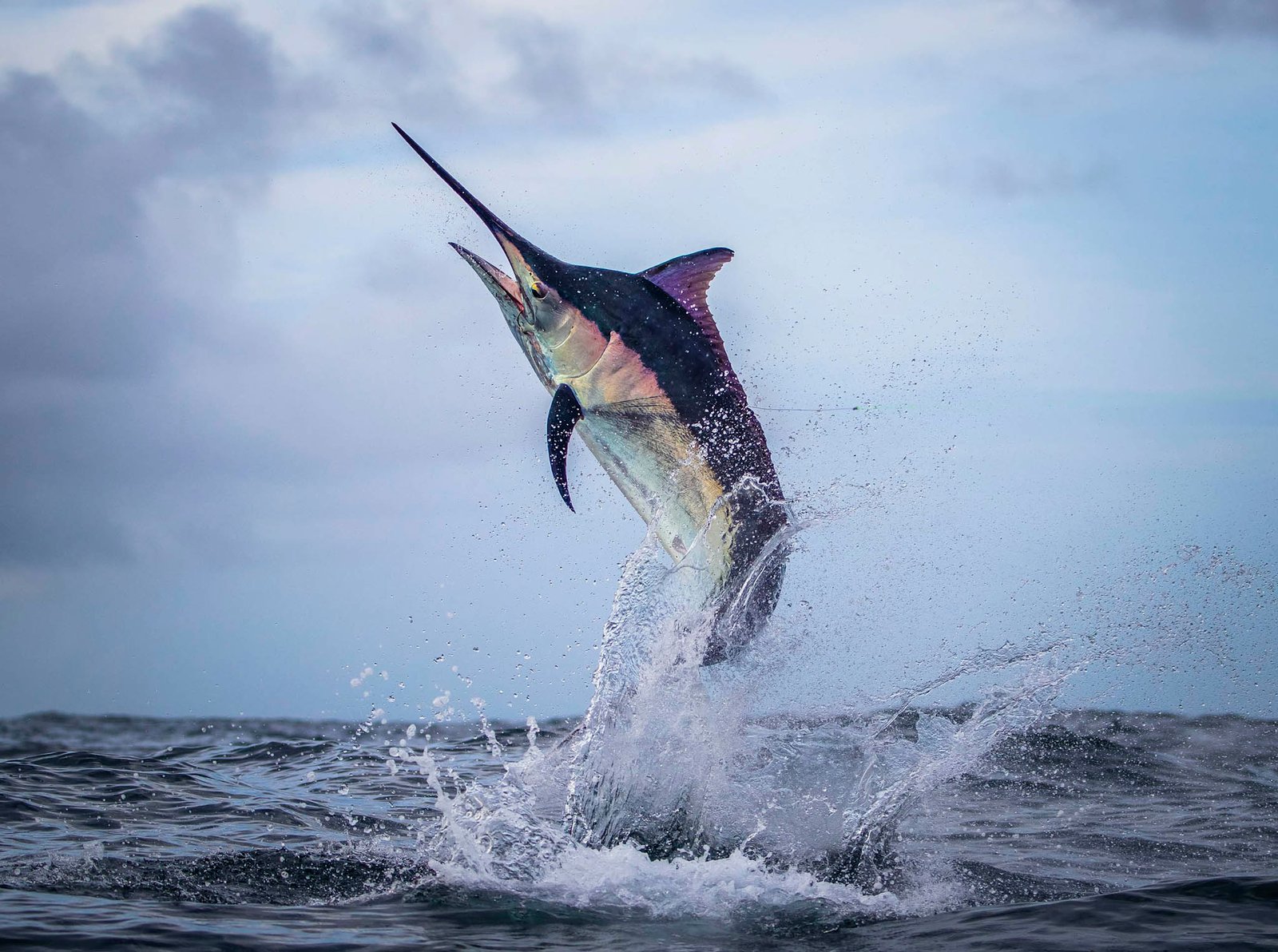
Somuncurá: The Boundless Plateau
Text and Photos: Mariana Lafont
Two hundred and seventeen miles along unpaved roads and National Route 23 separates Bariloche from Los Menucos, in the heart of Río Negro province, deep in Patagonia. This small village lies in one of the most sparsely populated and least developed parts of the province. National Route 23 crosses the steppes alongside the Patagonia Train, which links the mountain range to the sea. Planned in 1908, the railway was crucial to local development, leading to the emergence of station towns near the tracks, but the train did not reach Bariloche until 1934.
Los Menucos, a productive quarry town, sits at the foot of the Somuncurá Plateau. Somuncurá means “resonant or speaking stone” in Mapuche (from the sound made by the wind whistling past the rocks). The region is home to small- and medium-scale sheep breeders who responded to the wool crisis by forming the group Meseta Infinita, which encourages rural tourism and promotes interest in this area that is rich in petrified trees and reptile fossils dating back 140 million years —proof that Patagonia was once an enormous tropical forest. The group also revives age-old traditions like spinning wool.
Spinning in the Old Way
The Cooperativa Gente de Sumuncurá (the Mapuche spelling of Somuncurá) is a cooperative of artisans from small towns on the steppe who work with wool. The project was launched in 2002 in response to the lack of jobs available to residents of the area’s high plateaus. The cooperative supports existing job resources, creates businesses that handle local products, and seeks avenues for sales. It also revives disappearing artisanal practices that formed part of the culture of the original inhabitants like spinning, dyeing, and weaving wool from the sheep, goats and guanacos that populate the plateau. All production is completely hand-made. The Cooperative —now numbering 120 members— has not only reinforced the people’s identity, but it has also given women a more active role in the family economy. In addition to holding workshops, the cooperative sells its products at a shop in Los Menucos and the Mercado de la Estepa in Bariloche.
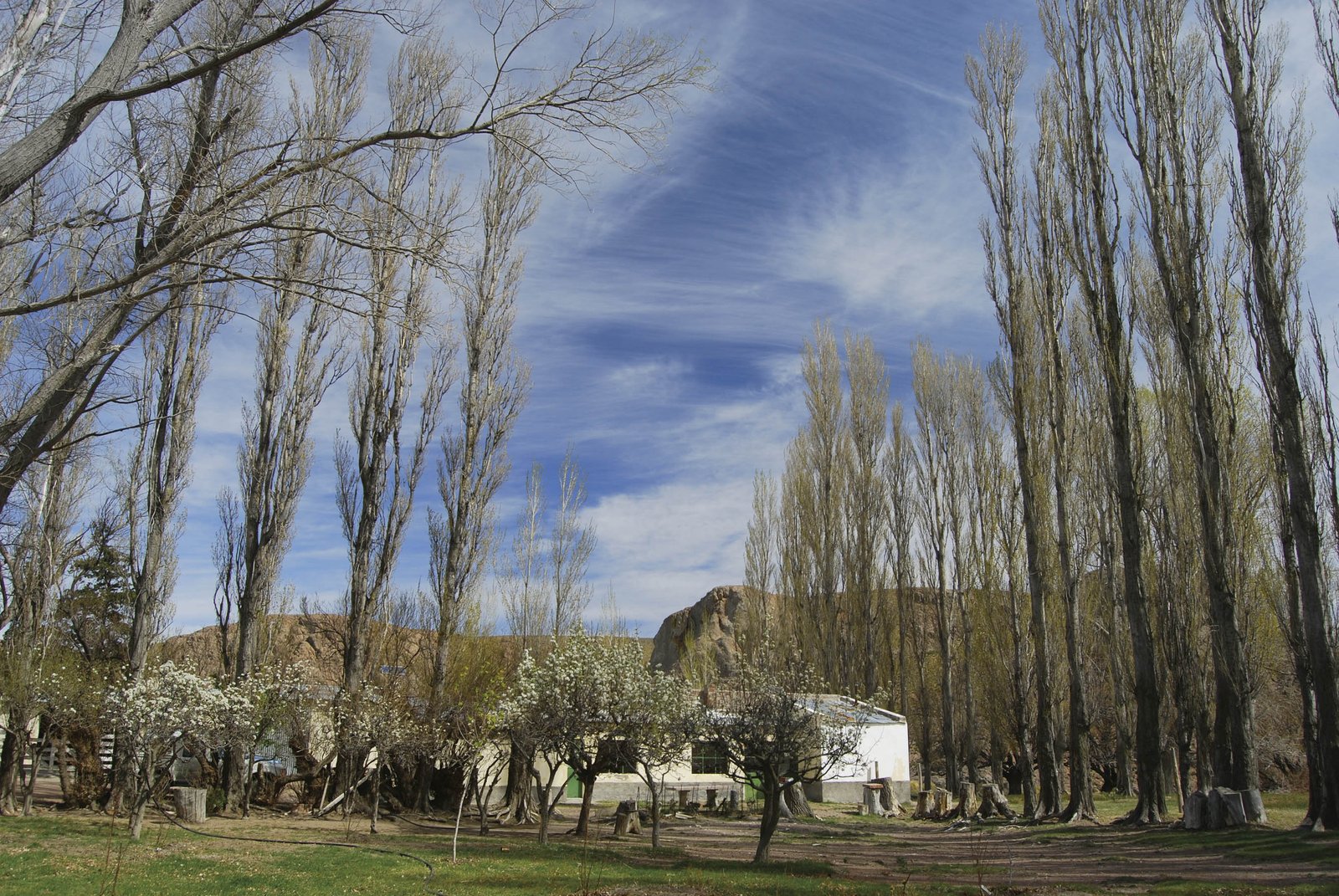
At the shop we are greeted by Martina, Elena, and Nelly, each of whom has her own specialty. Martina is a spinner, and she demonstrates the enormous patience required to spin with the traditional spindle, a waxed foot-long stick with a weight (whorl) at the base. The stick is spun like a top against a leg or by hand to turn the fiber into wool yarn. She then shows us how the spinning wheel is used. The treadle-activated wheel works a reel that spins the wool yarn. The process is so painstaking that it takes one to two weeks to obtain just over two pounds of wool. She also experiments with guanaco fiber, which is so fine and delicate that working with it demands even greater skill. This part of the process is essential, because all of the cooperative’s weaving is done with handspun wool.
Elena is so incredibly nimble on the Mapuche loom that it was difficult to follow the rapid movements of her fingers as they adjusted the threads. The loom is sized according to the fabric and constructed with vertical and horizontal rods, onto which the wool yarn is threaded. It then moves from right to left and left to right. The woven fabric can be plain or incorporate designs, which are not merely decorative, but also have meaning and even tell stories. Lastly, Nelly shows us balls of yarn she has dyed naturally using barberry, nutshells, onionskins, and yerba mate; she also crochets and knits. Weaving with sticks is very common throughout the country, but the cooperative seeks to balance the traditional aspects of Mapuche and Tehuelche designs with the practicality of the garments it designs.
Choiques and Guanacos
The La Caledonia ranch, located amidst reddish porphyry and caves, offers several attractions. Miguel Laurienti showed us a cave with grecas (geometric rock paintings) in red and ochre. The cave gave us a view of the ranch house surrounded by poplars, and in the distance, chenques (Tehuelche burial sites that look like rock cairns). But the ranch’s main attractions are the choiques (Lesser Rheas). In October, the females lay between twenty-five and thirty eggs, each of which weighs twenty-one ounces; the male incubates the eggs for forty days, and then charitos (babies) weighing fourteen ounces each are born. A nest with several pale green eggs sits in a corner of the corral, ready to be incubated. Once the birds are caged, Miguel approaches these speedy and likeable birds to feed them leaves by hand. Afterward, we visit the shearing shed where a large sheep was waiting to be shorn of a coat so fluffy it covered the creature’s eyes. We finally returned to the house, where the women awaited with freshly made noodles and stew.
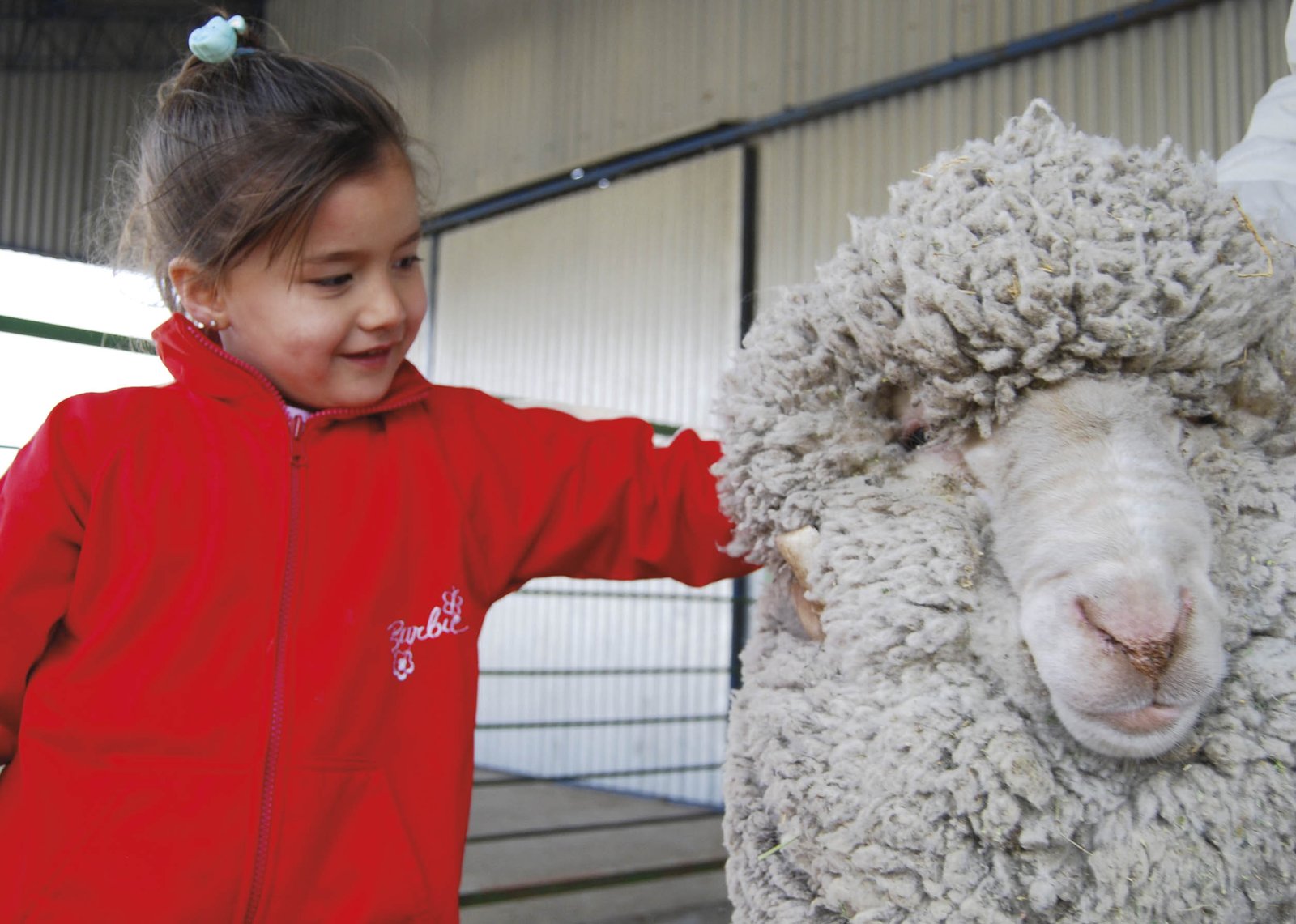
The best place to see guanacos is David Garrido’s Estancia Chacay. The guanaco has historically been considered a competitor to the sheep, but they were never culled on Chacay. We did not see any guanacos outside the ranch, but today nearly 4,000 guanacos live here alongside some 9,000 sheep. The guanaco is an endangered species, and Argentina —from Puna to Patagonia— is home to 95% of the world’s remaining guanacos. The 1995 wool crisis prompted David to produce guanaco wool, but with an emphasis on protecting this South American camelid. Guanaco fleece has hair (of little commercial value) and an undercoat of very fine fiber.
Shearing, which is done every two years (in October or November), yields about eighteen ounces of fiber per animal. A Chacay innovation is shearing wild creatures rather than domesticated ones. The animals are herded by horseback, motorcycle, and on foot into “chutes” that can stretch for miles. The chutes are fitted with special cloth that is intended to urge the guanacos into a corral lined with carpets to prevent any damage. The ranch also designed a kind of dump truck to transport the animals on a horizontal stretcher to the shearing table, which is shaped like a guanaco, making the shearer’s task easier.
The Plateau
The next day we visit Somuncurá, a vast basalt high plateau extending over 10,000 square miles; there are no towns or roads here, but this is very valuable land because it encompasses three geological periods: Precambrian, Tertiary, and Quaternary. The rough ground shows traces of volcano mouths and hollows that fill with rainwater to form three hundred lakes. In the distant past, the plateau was flooded by the ocean several times and the remains of bivalves and marine animals continue to be found here. The featureless horizon makes me feel I am truly “in the middle of nowhere.”
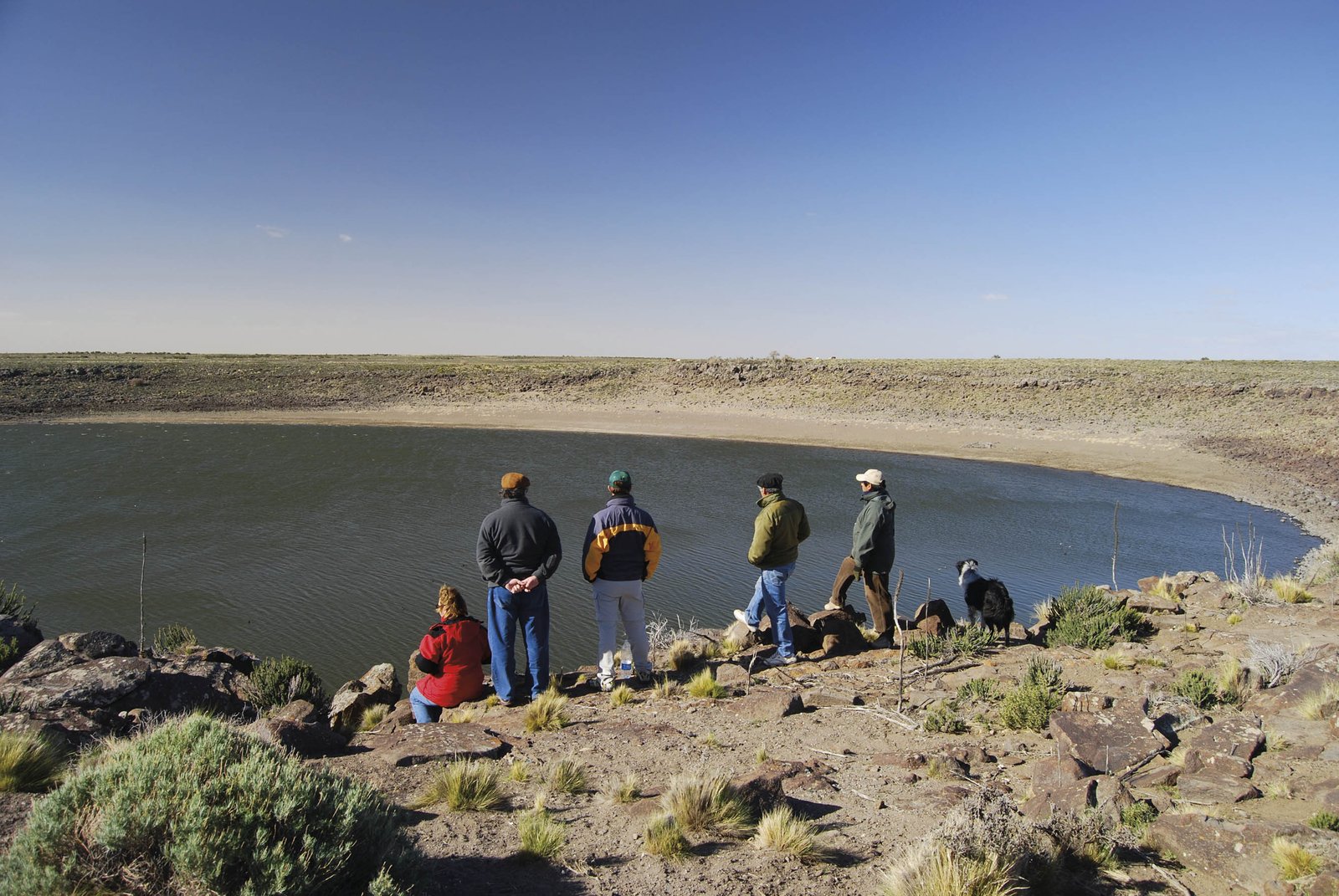
Many hours of riding in the truck brought us to Eusebio Calfuquir’s place. His ranch sits in a dip protected from the winds, near a dry lake bed. Water is a very scarce commodity here: it is obtained from a jagüel (a well or ditch that collects and holds water from rain or a natural drainage basin). Eusebio was born on the plateau, and his weathered skin shows his fifty-nine years. He spent his life on the plateau until he moved his family to Los Menucos so the children could attend school. But he still returns to the countryside: “I like the freedom here; I can go out for a walk and leave the door open. I don’t need to worry.”
We lunch on good grilled lamb near the hearth, and then, in the afternoon, we head toward Laguna Grande, some two and a half miles away. Along the way, Eusebio tells us that “people used to get together more on the plateau, because there were more families living up here.
Nowadays we don’t see much of each other, except when there is a sheep round-up.” In any case, the nearest neighbor lives more than a mile away. We stop to admire the lake and its coots, herons, black-necked swans, and flamingos. On the way back he tells us myths of the plateau, like that of the “rolling stone,” a stone that marks a trail as it rolls along. The finder of the stone is given gifts only to lose them, because this is the devil’s stone. The day flew by, and descending Somuncurá I remember reading a quote that reflects the reality of this unique spot: “The men and women of the plateau, who lived and still live on the plateau, blended into the landscape. They adapted to it without changing it. They made do with what was available.”
www.mesetainfinita.com.ar
www.gentedesumuncura.com.ar
